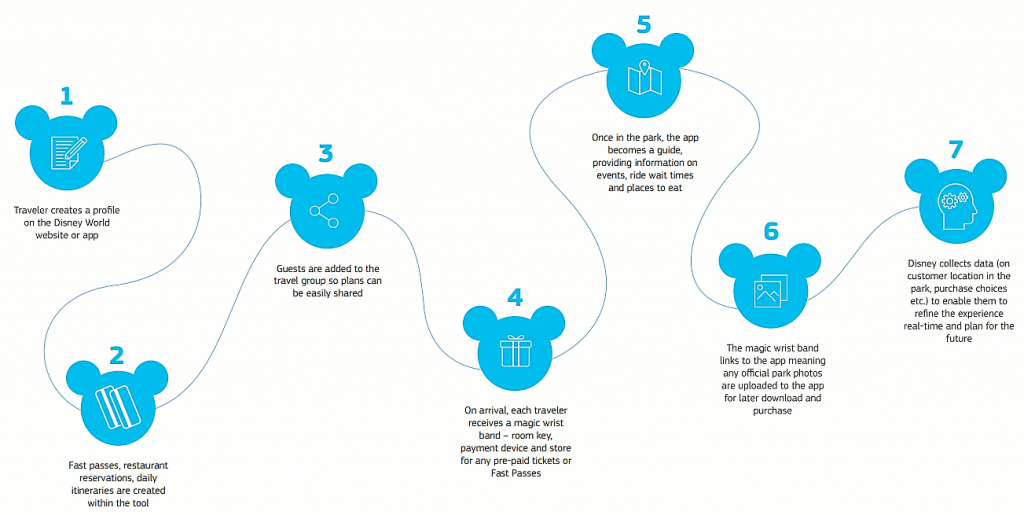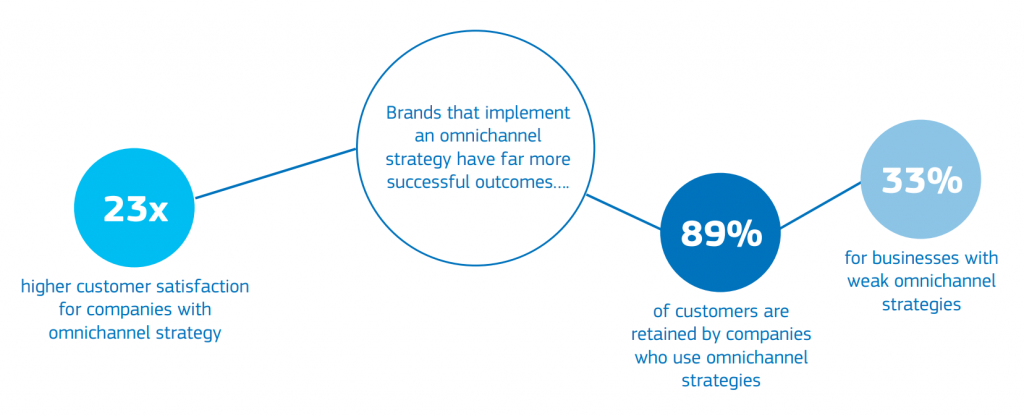❝The only way for travel brands to fully meet the desire for a highly personalized experience is to deliver a true omnichannel approach❞ – Amadeus 2021, 5
Introduction
The Article
The Insights for the New World of Travel: Omnichannel is a summary of four articles published by Amadeus. It discusses how the modern traveler is both offline and online and how the omnichannel strategy should connect those needs. It relies on co-creation, service-dominant logic, and maximizing marketing. All these themes are also important in the Marketing and eCommerce in Tourism study unit.
Amadeus interviewed, surveyed, and studied 35 travel sellers, 800 travel agencies, and 600 travelers. Their research was conducted in six languages.
Omnichannel 101
Omnichannel aims for the same content, the same service, and freedom of choice for customers (Amadeus 2021, 7). In other words, customers should have a seamless experience across all the platforms that they choose to use.
For example, Disney’s MagicBand offers seamless and personalized service that combines multiple channels into a cohesive experience. This is illustrated in Figure 1.

It should be noted that omnichannel is not the same as multichannel. The multichannel strategy does not try to understand customer choices to the same extent, and channels are less integrated because they are managed separately (Westfall 2021).
Key Points
Consumers have high expectations
Firstly, I noticed that a demanding customer was a common theme in the article.
Amadeus mentions Netflix as an example of a company setting high expectations. I can see why. Netflix offers offline viewing and personalized recommendations. It works on various devices, and if you stop watching, the show will continue from the same spot later. Consumers can choose to watch what they want, whenever and wherever they want.
Amadeus (2020, 4) argues that high expectations in traveling are only elevated by Covid-19. Customers demand real-time information and superior service on all platforms even more than before.
Omnichannel improves the customer experience
Secondly, I paid attention to the good results that omnichannel gave in customer satisfaction and retention. This is shown in Figure 2.
An average accommodation purchase journey lasts 36 days and involves 45 touchpoints across different devices and websites (Amadeus 2021, 8). Most of us cannot relate to that, so let’s consider laptops instead. When I need a laptop, I will do research on multiple online channels and buy it offline. But without omnichannel, I might still get laptop advertisements from the online store.
If the online store knows that I have already bought the laptop, they can give better service. For example, by offering firewall subscriptions or laptop bags. The same works for flight or hotel bookings. After booking, complementary offers from different channels can improve the customer experience.

Omnichannel is the future
Finally, I found that the main message of the article was to implement omnichannel as soon as possible. In fact, Yuruk-Kayapinar (2020, 56) argues that most traditional consumers have already turned into digital and omnichannel ones.
Did you know that…
- There were 204 billion mobile applications downloaded in 2019? (Gultekin & Erdem 2020, 212)
- There were approximately 50 billion network-connected devices in 2020? (Amadeus 2020, 4)
- There were 4.66 billion active internet users in January 2021? (Johnson 2021)
With society moving towards a digital world, travel companies should follow by utilizing omnichannel across platforms. Because as Amadeus (2021, 4-5) says, every touchpoint is an opportunity to connect with the traveler, but they have very individual preferences about when and how they interact with companies. Multichannel strategy is not enough anymore.
Results & Impact
Main results
The offline to online shift can happen fast, as we have witnessed with Covid-19. However, not everyone adapts to change at the same pace. Clive Wratten (Amadeus 2021, 4) suggests that marketing through multiple channels and touchpoints simultaneously helps the company reach a more diverse demographic. This is what omnichannel does.
The company benefits from the omnichannel strategy, too. For example, more than 60% of consumers use multiple devices when they shop online (Amadeus 2021, 8). When companies are able to track their most profitable platforms, they can improve marketing. Amadeus continues by sharing that while 10% of travel agencies believe communication channels are a top need, 43% of travelers see it as very important. By studying personalized data, companies can meet customers’ expectations more easily.
Impact on me
I had not heard of omnichannel prior to reading this article. It helped me understand service-dominant logic and how important it is to make sure that the different platforms work together cohesively.
Moreover, the co-creation aspect is fascinating to me. This is because it does not mean co-creation only between the company and consumers, but also between different sections of a company. It makes me wonder if in the future one must really master all platforms, or if the communication simply works more smoothly across the teams.
TLDR
Is at least one of these true?
You…
a.) Scrolled to the end yawning b.) Did not understand my rambling c.) Want to know more
I got you.
Bibliography
Amadeus. 2021. Insights for the new World of Travel: Omnichannel.
Gultekin, B. & Erdem, S. 2020. Omni-Channel Strategy in the Framework of the Search Engines. In T. Direshan (ed.) Managing Customer Experiences in an Omnichannel World: Melody of Online and Offline Environments in the customer Journey. Emerald Publishing Limited, 211-232.
Johnson, J. 2021. Worldwide Digital Population. Statista. Accessed 22 March 2022 https://www.statista.com/statistics/617136/digital-population-worldwide/.
Westfall, L. 2021. Omnichannel vs. Multichannel: What’s the difference? Ring Central. Accessed 20 March 2022 https://www.ringcentral.com/us/en/blog/omnichannel-vs-multichannel-whats-the-difference/.
Yuruk-Kayapinar, P. 2020. Digital Consumer Behavior in an Omnichannel World. In T. Direshan (ed.) Managing Customer Experiences in an Omnichannel World: Melody of Online and Offline Environments in the customer Journey. Emerald Publishing Limited, 55-73.